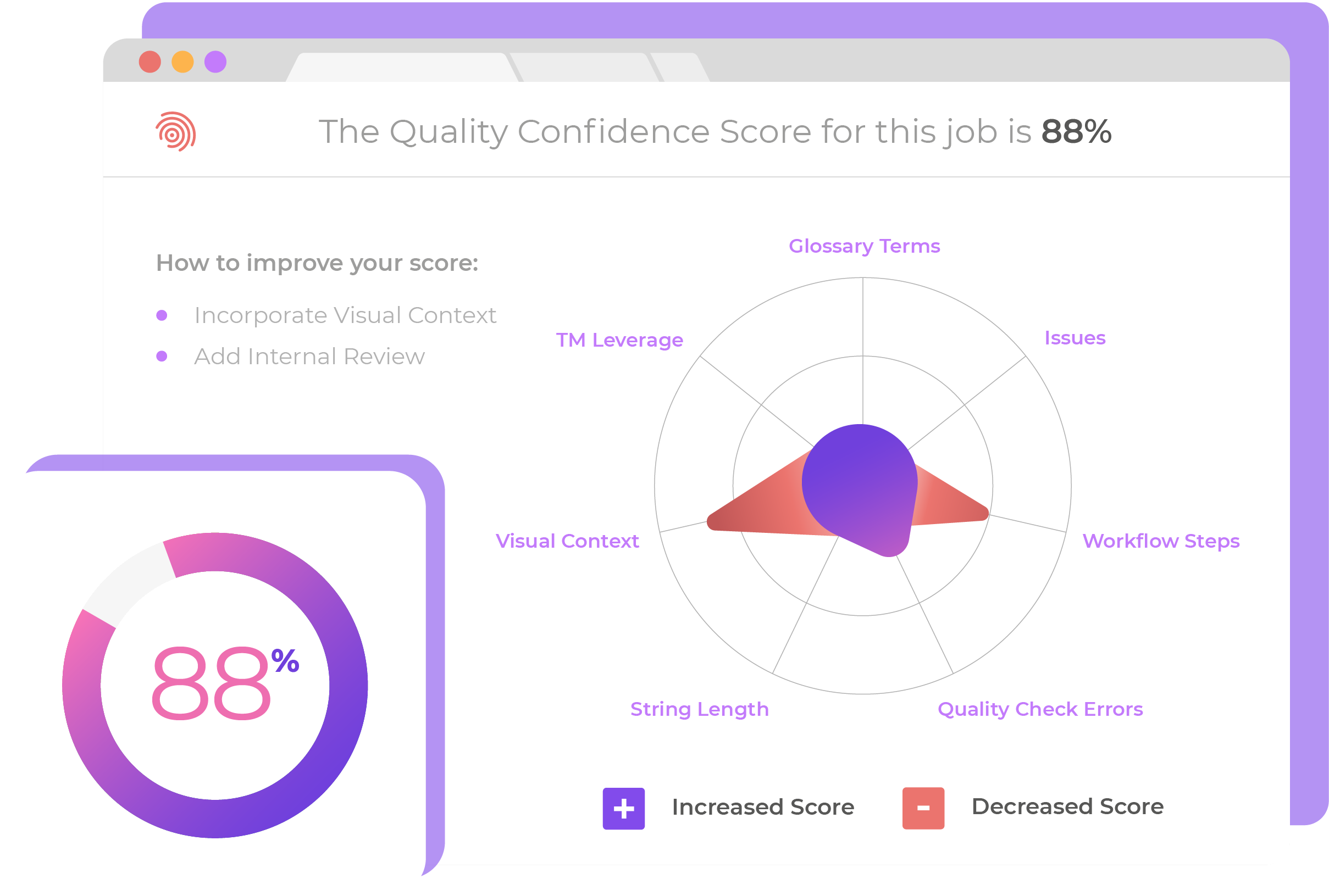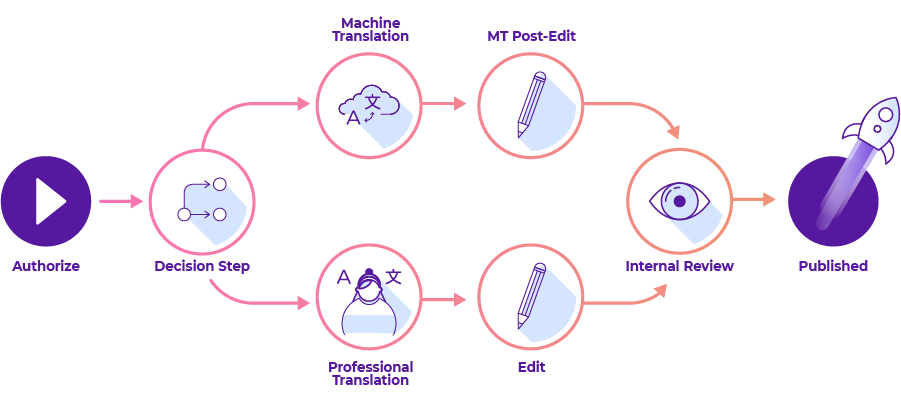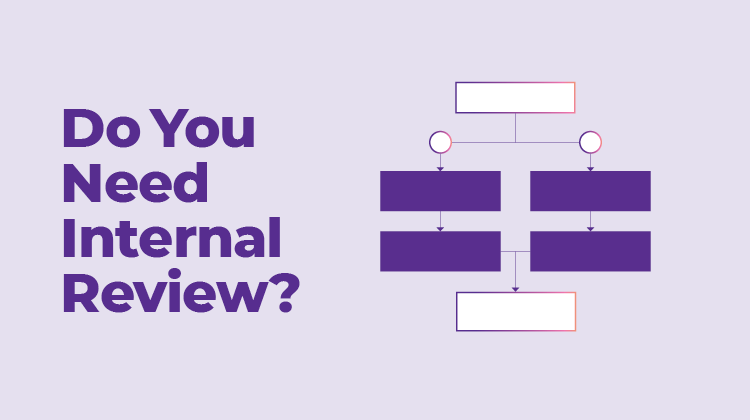We've been talking about quality a lot recently, and for good reason.
I love the title of one of our older posts, "your translation is ready but is the quality any good?" Because that hits the nail on the head.
Sure you can push out translations quickly by using cheaper resources, and you can ditch any review processes to move faster. But is the content any good? Without any quality measures at all, you run the risk of publishing messy, inaccurate, and off-brand content. That's a problem.
So what if we could introduce some quality checks, but didn't need to drag another set of eyes into the project for manual review? What if we could save time with automated quality controls?
Defining translation quality
In Episode 4 of Translation Isn't Blind, Kate mentioned that quality is a subjective concept. We all have unique personal experiences, insight, and goals, all of which influence our perception of quality.
Before we can begin implementing quality control, we'll need to set the right foundation for exactly what quality entails.
The debate we focused on last time was around accuracy vs preference: whether quality is defined by perfect comma placement, or rather the tone and essence of your message and style preferences.
Quality requirements can also come down to the overall value of your content, and the end-goal for that specific content. Accuracy might require a manual internal review step, adding to the time and cost of your project and lowering the value of your ROI. But if the goal is to move product fast, or spread awareness, it makes sense to focus on the right messaging over perfect detail.
Building a foundation for automating translation quality control
Managing content and translation is no easy task. Managing content and translation at scale quickly becomes complicated without the right foundation.
Automating your quality control simply wouldn't be possible without the right foundation of technology in place -- so right off the bat, your basic requirement is going to be a translation management system. But, of course, it goes a bit deeper than just adopting a TMS:
1. Integrations
You'll first need to create that technical foundation, but more specifically, a technical foundation where it's easy to move content around. Automatic downloading, automatic job assignment, automatic string parsing, and automatic workflows enable clear organization. Clean work starts with a clean desk, after all.
2. Linguistic Assets
Make sure you provide your translators with all of the resources, assets, and tools they'll need to be successful. Style guides and glossaries enable translators to quickly and easily look up the appropriate word choice or phrasing, and provide a solid reference point to work off of preventing any issues from appearing when translators have to fill in the gaps on their own.
3. Context
And to empower your translators to produce the highest quality content, you'll need to ensure you have a strong context solution. You want to bring the relevant information translators need front and center, again, we don't want them searching for information and filling in gaps on their own.
4. Feedback
And finally, how do you establish a feedback loop with your translators? Try to find the best to communicate around any issues and find a rhythm to keep that process flowing smoothly.
Automated Quality Control
Once you've established a solid foundation with the right chess pieces on the board, we can look at implementing Automations directly related to managing quality and translation issues:
Quality checks
Automated quality checks catch any errors or mistakes before translators can even complete their work, or submit their jobs for review.
By configuring specific Quality Check notifications, users can create an automated process that ensures translations cannot move forward in the process when an issue is recognized.
Quality Checks can even be configured to look for target language word misspellings, repeated words, and target or source written in the wrong language.
Issue Management
Smartling also makes it easy for translators or reviewers to raise any issues, and automatically notify the proper party of any action that needs to be taken.

While issues are directly accessible in the issues report, the real power is in our integration with Slack. When translators raise an issue, it'll automatically be sent to a dedicated Issues Management Slack channel, enabling project managers to take action right there in Slack.
No complex emailing, no sending messages back and forth missing context. Just an automatic Slack message, and a quick reply.
Quality Confidence Score
Smartling has even developed our own Quality Confidence ScoreTM (QCS) measurement. The QCS is a unique predictive reporting mechanism, driven by data, that assesses the overall likely quality of translator output for every job completed.

So you can not only help to identify deficiencies in the translation process, but also problems with the source content, any missing visual context, and other problems that might negatively influence ongoing translation quality. Not to mention, it's the industry's first predictive, machine learning-powered measure of translation quality.
Of course, your team can play around with different quality checks, different methods of assigning jobs and content, and different workflows for responding to issues. It'll be about finding that right balance between manual review and automated quality checks to ensure content it's accurate but doesn't slow down.
Getting Creative
And depending on exactly what your content is, or how valuable that content will be, we can get creative with implementing even more automation.
As I wrote a little while ago, not all content will carry the same weight, and add the same level of value to your campaigns, therefore not all content should receive the same level of attention.
When we know its content that can be changed easily or won't be seen by a huge audience, quality won't be as imperative and we can probably skip a few steps. But, when accuracy is mission-critical, sometimes it makes sense to move a little slower.
Smartling's Dynamic Workflows make it easy to automate this entire process, as well.

Users can set up and design workflows based on their specific needs, and link multiple actions to one trigger. For example, when a string receives a fuzzy score over or under a determined threshold, that content can be routed to either a human or machine translation resource, respectively.
Content assigned to specific jobs or sections of your website could also be automatically routed to machine translation, for example.
For example, if you'll be translating User-Generated Content, then it might make sense to have all that automated to machine translation to cut costs, while still providing the same experience.
Bottom Line
Ultimately, the end-goal here is to ditch internal review. By relying on automation, we can remove any extra human interruption into the process. We've said it before, and we'll say it again: about 98% of content that passes through internal review never even receives any changes.
So why would you want to slow down your content and spend more money when the result is the same?

Well, if you're unsure of where to get started there you can check out our flowchart on when you can remove internal review, and when you shouldn't.
If you still have questions, feel free to reach out, we're here to help!








